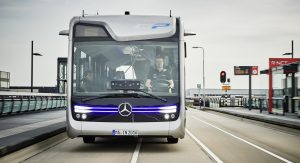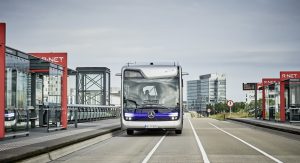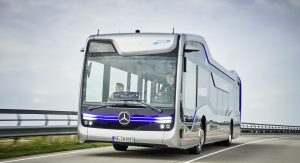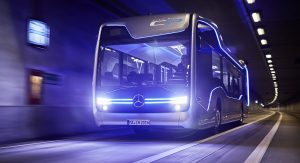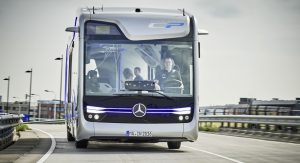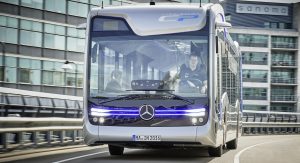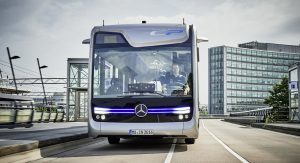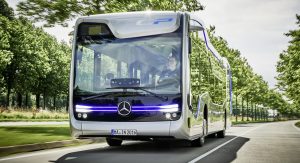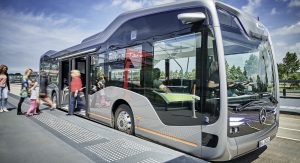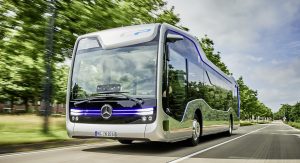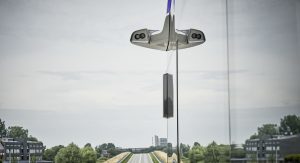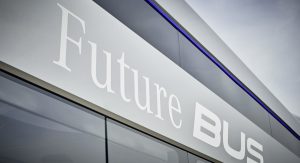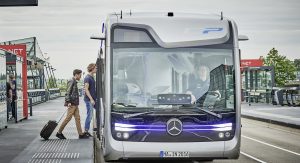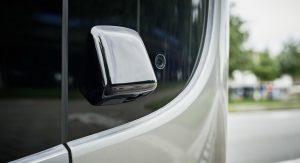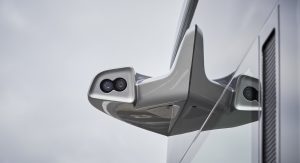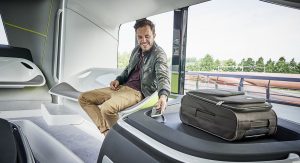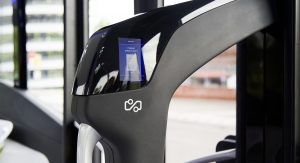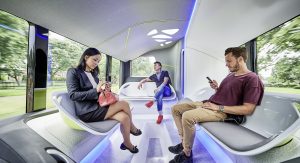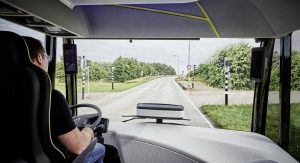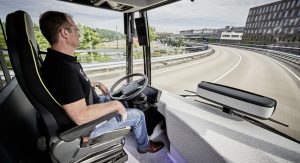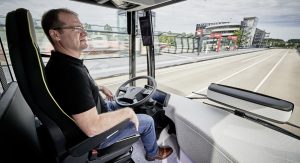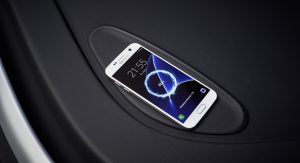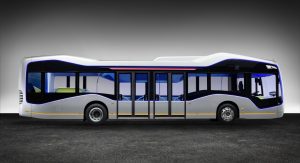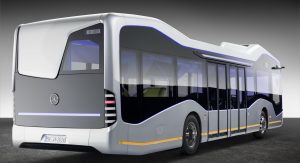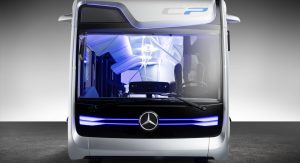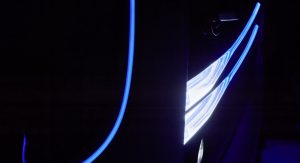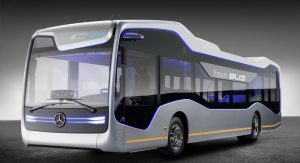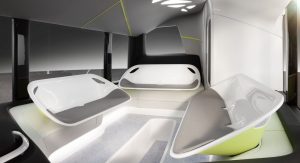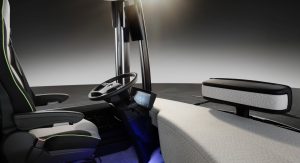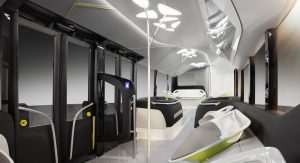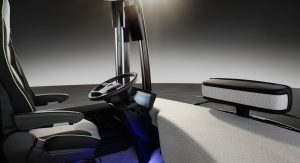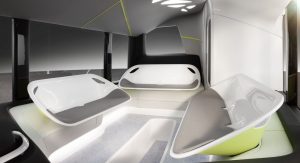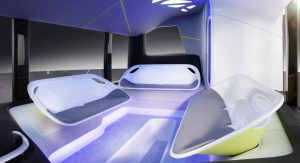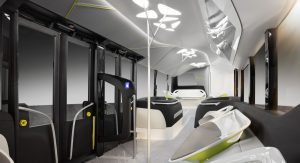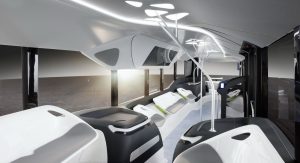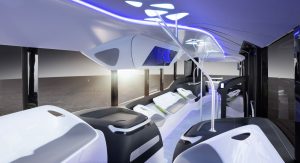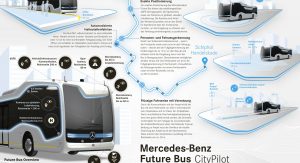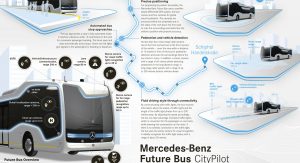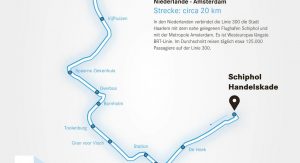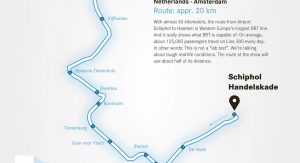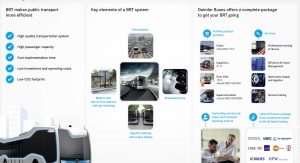Equipped with autonomous technology adapted for city use, the Mercedes-Benz Future Bus has been put to the test on the streets of Amsterdam.
Demonstrated on a section of the longest bus rapid transit (BRT) line in Europe, the vehicle drove itself on a 20-km (12-mile) route at speeds of up to 70 km/h (43.5 mph), during which it stopped at bus stops, opened and closed the doors, communicated with traffic lights and successfully avoided all obstacles nearby, from pedestrians to cars.
Daimler, which became the world’s first manufacturer to put a city bus through a real-life traffic situation, had a driver on board to monitor the CityPilot system, which can be activated by pressing a button and disengaged by a slight steer or touch of the accelerator or brake pedal.
The system uses long- and short-range radar, satellite-controlled GPS navigation, large cameras, and sensors that mostly came from the Future Truck 2025 Concept. Moreover, it can also communicate via Wi-Fi with the route infrastructure to receive info on traffic light status, taking advantage this way of the green wave.
“The system is a further development of Highway Pilot, especially for big cities. It allows us to drive partially autonomously on specially marked bus lanes. This makes public transport safer, more efficient and more productive. More people can travel from A to B quickly, punctually and in comfort. To the benefit of all: bus operators, bus drivers and passengers“, said Wolfgang Bernhard, Member of the Board of Management of Daimler AG for Daimler Trucks and Buses.
Daimler’s technology won’t put bus drivers out of work, as they will still grab the wheel occasionally, when the route is not suitable for automated driving. In order for the brand’s Future Bus to make transition from its current concept form to production, it will require separate lanes within BRT lines to be constructed.



![Mercedes-Benz’s Bus Of The Future Is Here [51 Pics + 6 Videos]](https://www.carscoops.com/wp-content/uploads/2024/04/Hyundai-Ioniq-5-N-1024x576.jpg)
![Mercedes-Benz’s Bus Of The Future Is Here [51 Pics + 6 Videos]](https://www.carscoops.com/wp-content/uploads/2024/04/2025-Toyota-4Runner-80-Stephen-Rivers-for-Carscoops-copy-1024x576.jpg)
![Mercedes-Benz’s Bus Of The Future Is Here [51 Pics + 6 Videos]](https://www.carscoops.com/wp-content/uploads/2024/04/2025_Toyota_4Runner_TRDPro_Mudbath_049-copy-1024x576.jpg)
![Mercedes-Benz’s Bus Of The Future Is Here [51 Pics + 6 Videos]](https://www.carscoops.com/wp-content/uploads/2024/04/ythgvf-1024x576.jpg)
![Mercedes-Benz’s Bus Of The Future Is Here [51 Pics + 6 Videos]](https://www.carscoops.com/wp-content/uploads/2016/07/2016-mercedes-benz-future-bus-0.jpg)
